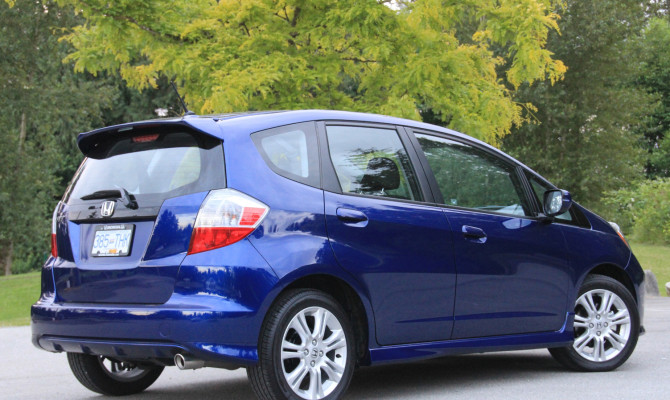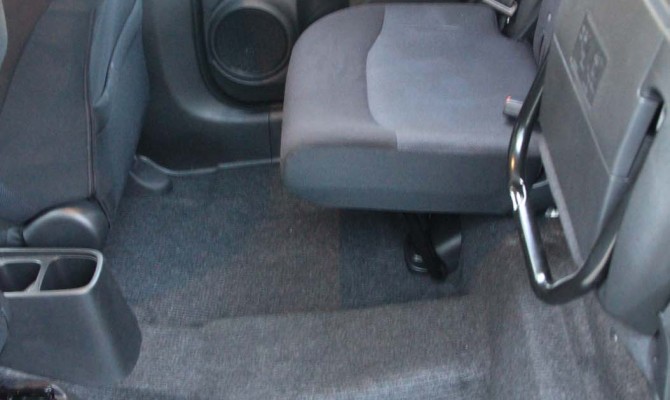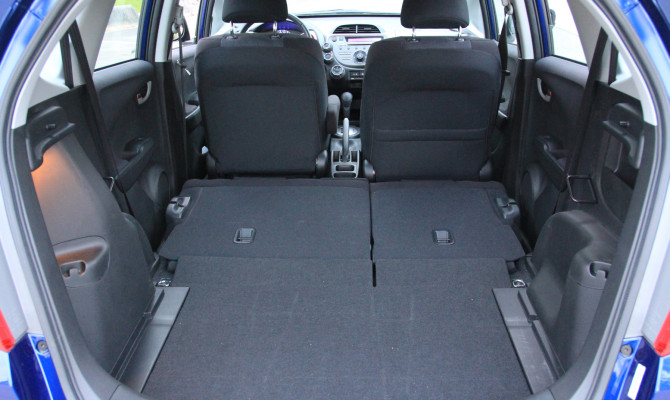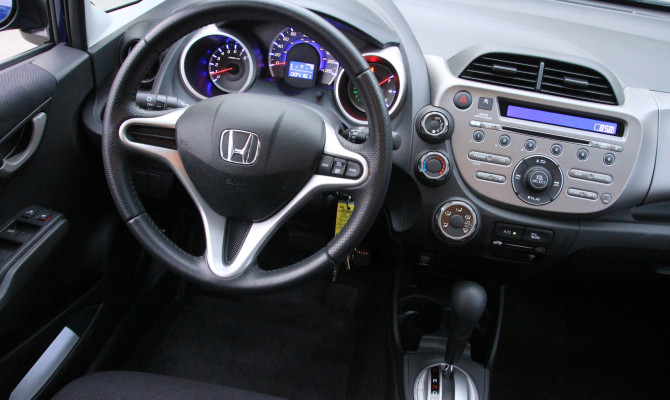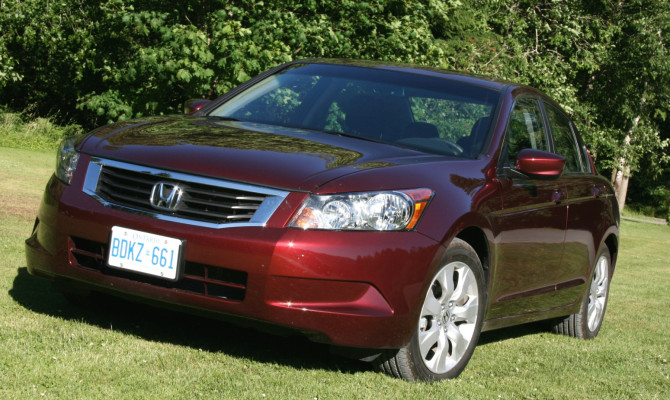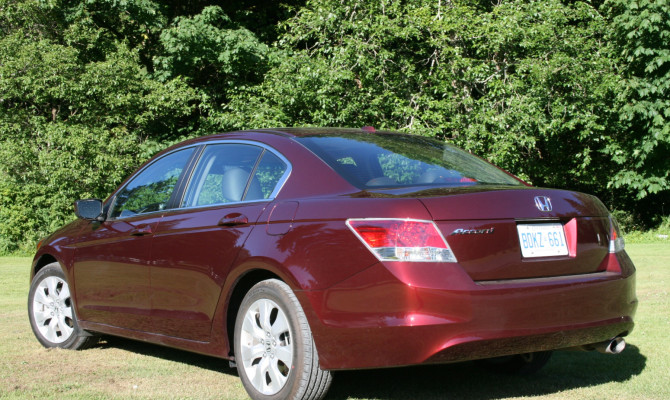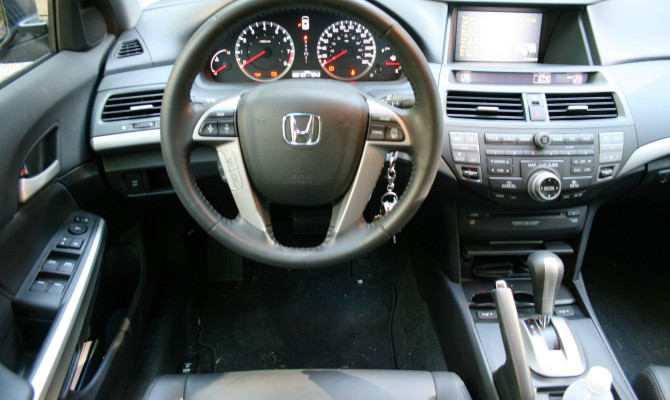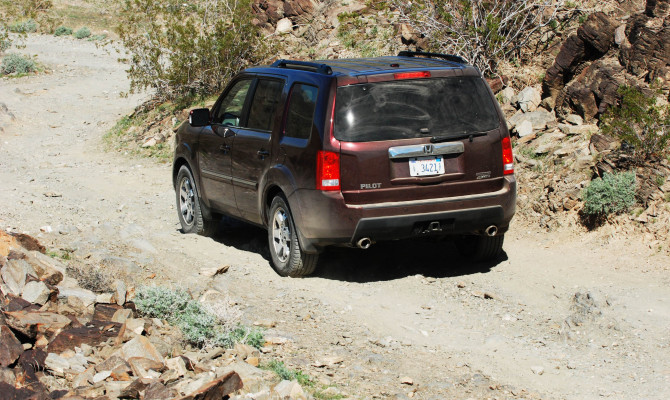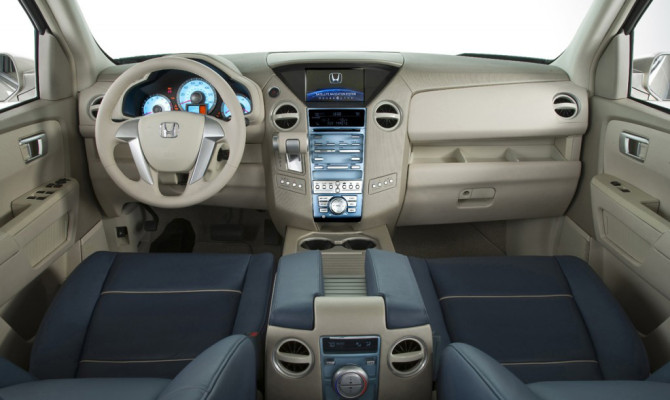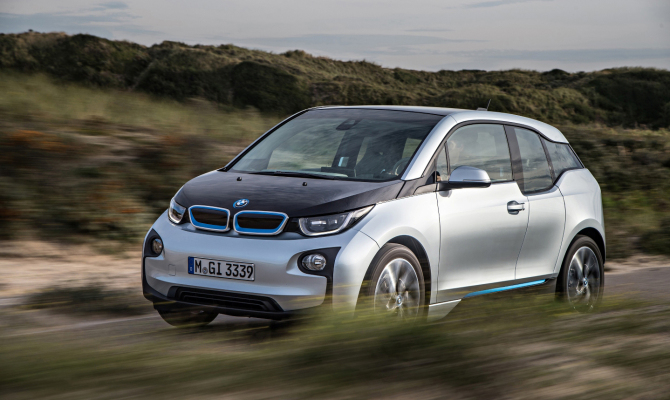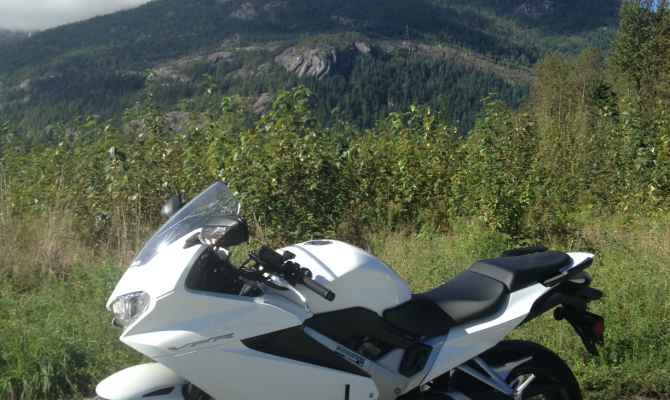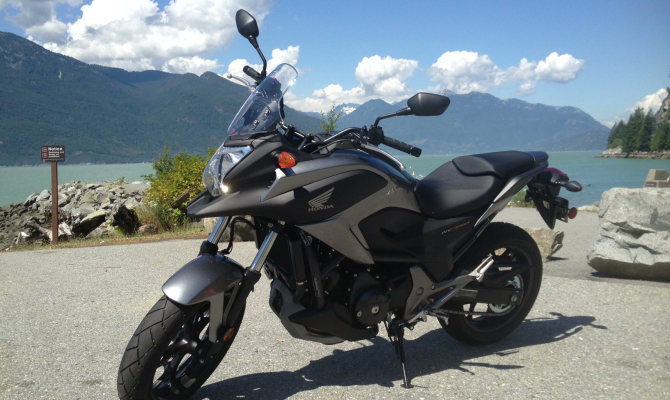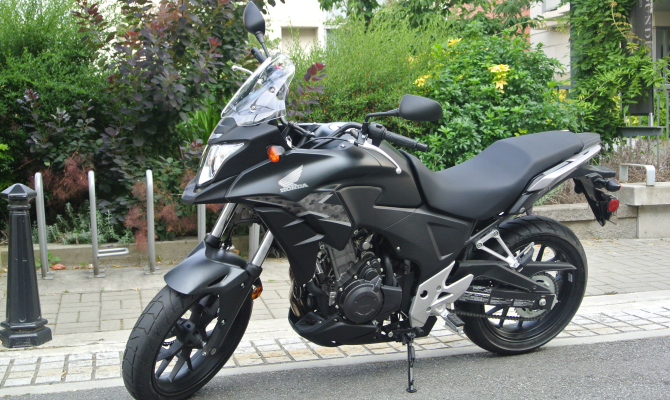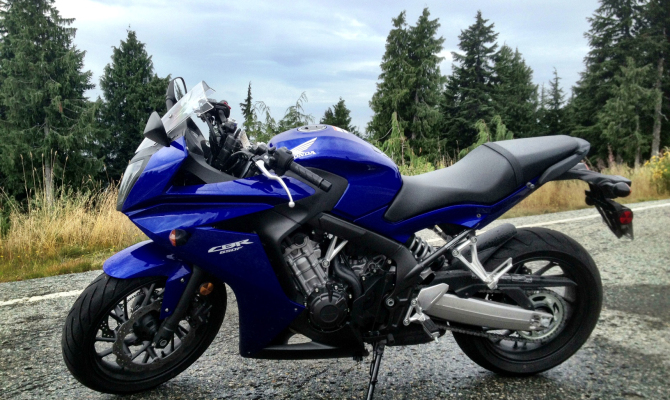PULL QUOTE: “There was a parade of new sport/crossover utes from virtually all manufacturers, all scrambling to get a share of this hot market segment.”
The sedan and Coupe are winners because they have excellent handling, efficient engines, and comfortable and tech-laden interiors.
Picking five top vehicles for the year is near impossible, but here are the ones that made the biggest impression on me (more…)
Will any manufacturer without plans for a small crossover please stand up? (more…)
“Fit offers excellent gas consumption, agile handling and zippy performance…”
The Honda Fit is a highly versatile 5-door subcompact hatchback.
It was introduced to Canadians in 2006 as a 2007 model and sells in other parts of world as the Honda Jazz. Like most good subcompacts, Fit offers excellent gas consumption, agile handling and zippy performance. A clever design, however, allows an owner to fit more stuff in a Fit than seems possible and it comes with an excellent occupant protection safety package.
The gas tank in a Fit is positioned further forward to allow a low, flat cargo floor in the rear and its seating can contort to a multitude of setups, to accommodate all kinds of cargo. Its rear side doors also open extra wide, making it easier to get that stuff in or out. There’s ample headroom for tall occupants and Fit’s cabin feels more spacious than most in this class.
The second-generation ’09 redesign gave Fit a more rigid and slightly longer body with even more passenger cabin space; an increase in engine power and this Fit is (marginally) more fuel-efficient. The extra inner space was achieved by positioning the front pillars further forward. Rear passengers benefited most with increased leg and headroom.
Fit comes in three trim levels; DX, LX and a top-line Sport edition. All trims are powered by the same 117-horsepower 1.5-litre engine and come standard with six airbags and anti-lock (ABS) brakes. The top-line Fit Sport adds a 160-watt premium audio system, keyless entry, fog lights, a rear roofline spoiler, cruise control, a leather-wrapped steering wheel, 15-inch alloy wheels and an aero under-body kit,.
Interestingly, the auto transmission versions come with a tire inflation kit instead of a spare wheel. It was a weight-reduction measure that also adds some extra storage space. A proper (conventional) spare wheel was offered as an option for the original owner.
Although it’s certainly not limited to being an urban runabout as Fit is surprisingly stable on the highway, considering its short wheelbase and trim, tall-ish body. Yet, some will probably find the high-speed cabin noise level and Fit’s taut ride a little tiresome on a long road trip.
Mechanical reliability is excellent and city/highway fuel economy is roughly the same with the base five-speed manual transmission or optional five-speed automatic. Using the new five-cycle rating method, an ’09 Fit with an automatic should consume 8.3 litres every 100 km when driven in the city and 6.6 litres every 100 km on the highway.
The only significant production change to the second generation Fit came for the 2011 model year when an electronic stability control system was included as a standard feature on the Sport edition. It was optional on other editions and it’s definitely a very good handling enhancing safety feature.
Popular cars sell at premium resale prices and the second generation Honda Fit is a prime example. Beware of imports from the east (do an ownership history check) as corrosion and road salt issues are a concern. If you’re paying a premium price, make sure it’s a primo Honda Fit.
Price Check: 2009 – 2014 Honda Fit (April 2015)
Year Edition Expect to Pay Today
2009 LX $7,500 to $10,000
2010 LX $8,500 to $11,500
2011 LX $10,000 to $13,000
2012 LX $11,500 to $14,500
2013 LX $13,000 to $16,000
2014 LX $15,000 to $18,000
Prices vary depending on a used vehicle’s condition, mileage, usage and history. A complete mechanical check should always be performed by a reliable auto technician prior to purchase.
Safety Recalls: 2009 to 2014 Honda Fit:
2009/2010: A spring in the lost motion spring assemblies of the engine’s variable valve timing and lift electronic control (VTEC) system may bind and fracture. This could potentially cause the engine to stall, without the ability to restart. Dealers will inspect and, if necessary, replace the four lost motion spring assemblies.
2012/2013: The Vehicle Stability Assist (VSA) system may sporadically stop functioning as intended. Dealers will reprogram the Vehicle Stability Assist software.
2013/2014: The passenger side driveshaft could fracture and separate. Dealers will replace affected driveshafts.
“A Canadian family transportation favourite, the Honda Accord sedan is a top used car choice with a solid reputation for dependably and value.”
The very first Honda Accord, introduced to Canadians back in 1976, was about the same size as today’s Civic sedan and it had a less-powerful engine.
When the eighth generation Accord was introduced in 2008, it was officially classified as a “large car” and came with a 190-horsepower 4-cylinder engine, or an even more powerful optional V6.
Eight-gen Accord did get a mild mid-life facelift for the 2011 model year and it included new front-end styling and some interior improvements. A new base SE trim line also replaced the previous LX trim.
The four-cylinder is by far the most popular engine choice of Canadians, but there was also an interesting upgrade to the optional 3.5-litre V6 in 2011. Called Variable Cylinder Management (in Sedan editions only – not Accord Coupe), this system can improve fuel economy by shutting-down two or three cylinders, during light load driving conditions. Highway fuel economy with this V6 is almost the same as the four-cylinder version of Accord.
No changes were made to Accord for the 2012 model year. The big changes came in 2013 when a landmark, smaller and lighter, all-new ninth generation Honda Accord was released.
Although lighter, the 2013 Accord is structurally stronger than the previous generation Accord and although its outer dimensions are more compact and it has a shorter wheelbase, it has more rear seat legroom and a slightly larger trunk, according to Honda.
Major changes also happened under-hood with the release of Honda’s new “Earth Dreams” engine technology. This could also be linked to a high-efficiency new CVT automatic with “G-Design Shift Logic”. This feature provides quicker acceleration, as it’s faster acting than a conventional automatic transmission.
In addition to being considerably more fuel efficient the 2.4 litre four-cylinder “Earth Dreams” editions of Accord are also super-clean running and complies with PZEV (partial zero emission vehicle) requirements in the US. This engine also supplies more power at low engine speeds, just where you need it, on take-off, on a hill or when merging into freeway traffic.
Its city/highway fuel economy ratings of 9.1/6.6 L/100 km, with the CVT, are outstanding for a family-size sedan. A 6-manual was available with the base LX and Sport trim levels and a conventional 6-automatic came with the V6 engine editions.
In addition to four-door sedan and two-door coupe models of Accord, there’s also a five-door hatchback/cross-over version called Crosstour, which was originally called Accord Crosstour when introduced in 2010. A new plug-in hybrid (sedan) version, called Accord PHEV, was also introduced in 2014. It’s powered by a new two-motor hybrid system that operates continuously through three modes; all-electric, gasoline-electric or direct-drive.
Accord sedan has consistently been a top performer in crash tests performed by both the IIHS and the NHTSA in the US. It’s also highly rated by Consumer Reports for dependability and it has better resale value retention than most in the class.
A Canadian family transportation favorite, the Honda Accord sedan is a top used car choice with a solid reputation for dependably and value.
Price Check: 2011 – 2014 Honda Accord (March 2015)
Year Edition Expect to Pay Today
2011 EX-L Sedan $16,000 to $19,000
2012 EX-L Sedan $18,000 to $22,000
2013 EX-L Sedan $21,000 to $25,000
2014 EX-L Sedan $24,000 to $28,000
Prices vary depending on a used vehicle’s condition, mileage, usage and history. A complete mechanical check should always be performed by a reliable auto technician prior to purchase.
Safety Recalls: 2011 to 2014 Honda Accord:
2012: The side curtain airbag inflators may have been incorrectly manufactured and, as a result, one or both airbags may not deploy as intended. Dealers will inspect and, if necessary, replace one or both side curtain airbag assemblies.
2013: The fuel tank may have been manufactured incorrectly and could leak gasoline. Dealers will replace the fuel tank.
“The 2015 Honda Pilot is a reliable/spacious SUV and is a real joy to drive.”
Pack everything into the all-new 2015 Honda Pilot and there is still surprisingly enough room for eight people…
Looks
The vehicle was re-designed in 2009 yet it still fits today’s market and has a unique style to it. It rally resembles no other competitor which is more than can be said of many in this market segment,
In The Cab
There is plenty of room in this eight-passenger sport ute. The second row has an extra 25 millimetres, the third has 50 millimetres and there’s a slight an increase to the cargo area. The 60/40 second row and third row bench seats fold flat to give a good surface to transport larger items.
Another added improvement is the rear glass that can be opened independently from the hatch. If you go for the EX-L RES or Touring edition there is a power lift gate. A 229-watt audio system with seven speakers and a subwoofer is available on the LX, SE and EX-L RES model while the Touring comes with a 650-watt, AM/FM/CD Premium audio system with MP3/Windows media and 10 speakers including a 5.1 surround sound theater mode, also a 15 GB hard drive (HDD) audio storage. There is an available Honda DVD rear entertainment system with 9-inch display. An available Honda satellite-linked navigation system with trilingual voice recognition that responds to over 800 verbal commands, as I do at home.
Safety First
The 2015 Pilot’s standard safety equipment includes Vehicle Stability Assist, commonly known as electronic stability control with traction control and ABS. There are three-row side curtain airbags with roll over sensor; dual stage front air bags, a driver’s front side air bag, and a passenger’s front side air bag with occupant position detection system. There is also hill start assist on all models. The VTM-4 system directs power to the front differential when extra traction is not required, helping with the fuel economy, when more traction is required, the system engages the rear differential.
Roadworthy
I had the opportunity to take the SE 4WD along some logging roads in Squamish. It was incredibly smooth as it glided over potholes and dodged ditches. Although they were not rough roads it is certainly nice to know that you could take your family camping knowing you can travel to most locations without experiencing problems because you left the pavement.
The Pilot has variable cylinder management (VCM), which shuts down two or three cylinders when not required. The five speed automatic transmission runs smoothly and very quietly when shifting. When the green ECO light comes on, I noticed the transmission was a little noisier as the engine decreased the number of cylinders in operation. The Pilot has a tow rating of 2045 kg (4500 lb).
Verdict
The 2015 Honda Pilot is a reliable/spacious SUV and is a real joy to drive.
Contact: ian [dot] harwood [at] drivewaybc [dot] ca
**********
Power:
The 3.5 litre, 24 valve, SOHC i-VTEC V6 engine delivers 250 hp and 253 ft lbs of torque with variable cylinder management (VCM).
Pump frequency:
13.1 L/9.1 L/100 km (city/highway)
Warranty support:
36 month/ 60,000 km with 60 month/ 100,000 km power train warranty
Sticker price:
LX 2WD ……………… $35,100
LX 4WD ……………… $38,100
SE 4WD ……………. $42,500
RES 4WD …………. $44,500
TOURING ……………. $48,850
“Customers may not have asked for an aluminum body, instead of steel, but there’s solid reasoning behind this change…”
Steel is out and aluminum is the new lightweight “in” material for auto body panels.
Hang on a minute, maybe it’s Carbon Fibre-Reinforced Plastic? These two materials, plus a very different type of hybrid, are entries for the 2015 AJAC Best New Innovative Auto Technology Award.
Ford – F150 Aluminum Body
“If I had asked people what they wanted, they would have said faster horses,” is a quote attributed to Henry Ford, founder of the Ford Motor Company.
The Ford F150 has been the best-selling in truck sold in Canada for the last four years. Customers may not have asked for an aluminum body, instead of steel, but there’s solid reasoning behind this change.
Aluminum reduces body weight by 40-to-50 per cent. It’s more resistant to corrosion issues and it’s 100 per cent recyclable. In addition to fuel efficiency benefits, a lighter vehicle also has positive influences on braking, handling, ride and acceleration.
A special heat treatment, developed by Ford, nearly doubles (compared to steel) the strength of the military grade aluminum (magnesium) alloy body panels used in the new F150, making them more resistant to dents. Much of the raw aluminum also comes from Canada, as does a good portion of the secondary processing.
Ford’s experience with aluminum body parts actually goes all the way back to the 1915 Model T. In 2009 it secretly built an aluminum body F150, for test purposes, and Ford engineers have also been able to draw from experience in developing current production vehicles such as the all-aluminum body Jaguar XJ.
BMW Carbon Fibre-Reinforced Plastic
The BMW i3 and i8 are two new all-electric vehicles with ultra-light-weight bodies made from Carbon Fibre-Reinforced Plastic (CFRP). It’s a man-made material that’s extremely strong and it’s about 30 per cent lighter than aluminum. This is the first time that the entire body of a production car has been made with a carbon fiber compound.
CFRP is a composite material consisting of carbon fiber surrounded by a plastic matrix (resin). It’s completely resistant to corrosion and is expected to have a substantially longer useful life than metal. It also remains stable under all climatic conditions, according to BMW, even when it’s exposed to large temperature fluctuations.
Carbon Fiber is not a new material to auto racing enthusiasts, where its exceptional strength and light weight make if an ideal body material. CFRP has also been used to make trunk lids, roofs and even drive-shafts in the sporty M Series models by BMW. The main drawback to using carbon fiber in mainstream production vehicles, however, has been its cost, which brings up a Pacific Northwest connection,
All of the carbon fiber use in i3 and i8 comes from a new production plant in Moses Lake, Washington State. In fact, BMW has plans to triple capacity in Moses Lake and make it the world’s largest carbon fiber production plant. More and more BMW models are expected to include components made with CFRP and large-scale production is expected to reduce unit costs.
Honda/Acura – Sport Hybrid SH-AWD
The hybrid edition of the new Acura RLX includes the first-ever electronic (torque vectoring) Super Handling All-Wheel Drive (SH-AWD) system used in a production hybrid vehicle. This RLX is also the most powerful Acura production model ever built. Combined peak output is 377 horsepower and peak torque to the front wheels is 273 lb-ft at 4,700 rpm. Yet, its fuel consumption is incredibly low, at just 8.0/ 7.5/ 7.7 L/100km (city/highway/combined).
The hybrid powertrain includes three electric motors, one up front and two in the rear, and they all provide both power assist and regenerative charge to a battery pack. The gas engine is a 3.5-litre, 310-horsepower V6 with Variable Cylinder Management that’s linked with the 7-speed dual-clutch transmission.
Acura’s super-handling all-wheel-drive uses “torque vectoring” to create a yaw moment that helps the RLX turn effortlessly. It functions like an enhanced differential that sends more power to the outside rear wheel during cornering. And, like magic, you’re a much better and smoother driver. The RLX’s sophisticated hybrid system can also allows it run strictly on battery power with the rear motors driving the vehicle.
The 2015 AJAC Best New Auto Safety Technology Award will be announced at the Montreal Auto Show on January 15, 2015.
“We might be deep into fall – with the accompanying frigid temperatures – but on sunny days, the roads aren’t without motorcycles…”
Honda has had a big year.
Not only did it bring back the popular VFR800F (which I’ll get to in a bit), they released some all-new products.
But the fun isn’t stopping there. With more motorcycles on the way for 2015, I thought now would be a good time to look back at some great bikes I rode in 2014.
Besides, we might be deep into fall – with the accompanying frigid temperatures – but on sunny days, the roads aren’t without motorcycles. That’s definitely a warming thought.
CBR650F
Don’t let the “CBR” designation – followed by the 650 – intimidate you. This all-new middleweight bike has the sporty flair that you’re used to but with a twist.
With a curb weight of 211kg (465 lbs.) and a seat height is 810mm (31.8-inches), complete with a narrow middle profile, it allows a range of riders to feel comfortable atop its seat.
What I really liked about this bike is that yes, you have the sport bike styling, but without the wrist and backache that can sometimes be experienced. The ergonomics are more upright so I was comfortable for much longer when I decided to go for an extended ride.
Honda mentions that the development team included many engineers in their 20s.
That’s a good thing, considering they want to attract a younger customer with the CBR650F.
Furthermore, engineers decided early on that chasing peak power at redline was off their agenda. Strong acceleration from a standing start, low/mid range torque and mid-gear roll-on throttle response were targeted as the essential elements.
Speaking of which, it’s powered by a liquid-cooled, 4-stroke, DOHC, inline-4 engine.
It comes in great colours like Sword Silver Metallic, and my test bike, which happened to be the eye-catching Candy Tahitian Blue
The CBR650F has an MSRP of $8,999.
VFR800F
The wait is over and 2014 saw the re-introduction of the VFR800F.
The legendary motorcycle is completely updated with a modern look, a brand new telescopic fork, Pro-arm swingarm, wheels and bodywork.
Not to mention, there’s an adjustable seat height, standard-fit Traction Control System, ABS, heated grips and Honda’s unique new self-cancelling turn signals.
In the process, it sheds 10kg from the previous model, and has an engine re-tuned for greater low and mid-range torque.
The V4 engine configuration, which powers this sport-touring machine is unique to Honda and dates back four decades.
The 782cc, liquid-cooled, DOHC 90° V4-VTEC engine allows for some great low-end power, but rev it higher and you dig into the VTEC, which will really put a smile on your face.
Much like the VTEC in Honda vehicles, VTEC valve timing still operates one pair of inlet/exhaust valves per cylinder at low rpm, and then switches to four as revs rise but the transition is now seamless.
The seat is height adjustable (789mm/31-inches or 809mm/31.8-inches) using the tool provided and it weighs in at 239kg (527 lbs.)
It’s not a svelte bike by any stretch, so urban riding wasn’t my favourite. But on the open road, it is just a treat.
It has an MSRP of $13,499.
NC750XA
Ah, the NC750XA. A bike I’ve been dying to get on since the NC700s came out two years ago.
It’s the more adventurous of two NC models (the S and X), with a taller ride height (830mm/32.6-inches in comparison to 790mm/31.1-inches) and a more upright seating position.
This “different” breed of bike isn’t the high redlining sort Honda riders might be used to. It’s ideal for urban romping or a pleasure cruise.
For 2014, an extra 75cc capacity was added to the liquid-cooled, SOHC 8-valve parallel twin- cylinder engine.
With its engine mounted low to the ground, it naturally equates to a low centre of gravity and an easy-to-move-around type of riding dynamic. Furthermore, you can get upwards of 400km out of the 14L tank. Not bad.
And it get’s better.
With the fuel tank under the seat, you have that allows for a handy storage compartment in place of where you’d normally put in your gas; one of the coolest features of this bike.
It has an MSRP of $8,199.
CB500XA
One member of the CB500 trifecta, the 500XA, is a charming little bike that fulfills the idea of owning an adventure-style bike but one that is more manageable for newer riders in the genre. It has a compact adjustable windscreen, open riding accommodations and large-capacity fuel tank.
It has an MSRP of $6,049.
Recent Comments
- { Enjoyed your Forest of Bowland in the BMW X5M, particularly the photo of the BMW in front of the main part of Stonyhurst College where... }
- { Bantam designed the Jeep, not Willy's or Ford. The American military gave the original Bantam prototype to Willys and Ford to copy. There is plenty... }
- { All Escalades come with a 6.2-lilter V8 engine that produces 420 horsepower. A six-speed automatic is the only transmission offered and drives the rear wheels.... }
- { Alexandra is an excellent journalist. }
Popular Posts
- Journey to a ‘Sparkling’ Luxury Okanagan Resort “Four lucky readers will put a Dodge Journey’s weekend-...
- The Need For Speed: Hike Those Highway Limits More than half of those polled believe the province sho...
- Drives-U-Crazy… Erratic drivers. An early morning drive from Kelowna to Vancouver is nor...
- Readers Respond: The Pros and Cons of Increasing B.C. Speed Limits Increasing the speed limits will only increase risk to...
- Honda CR-V Review: The Compact Crossover To Get Things Done The CRV is a very stylish and aerodynamic crossover veh...


